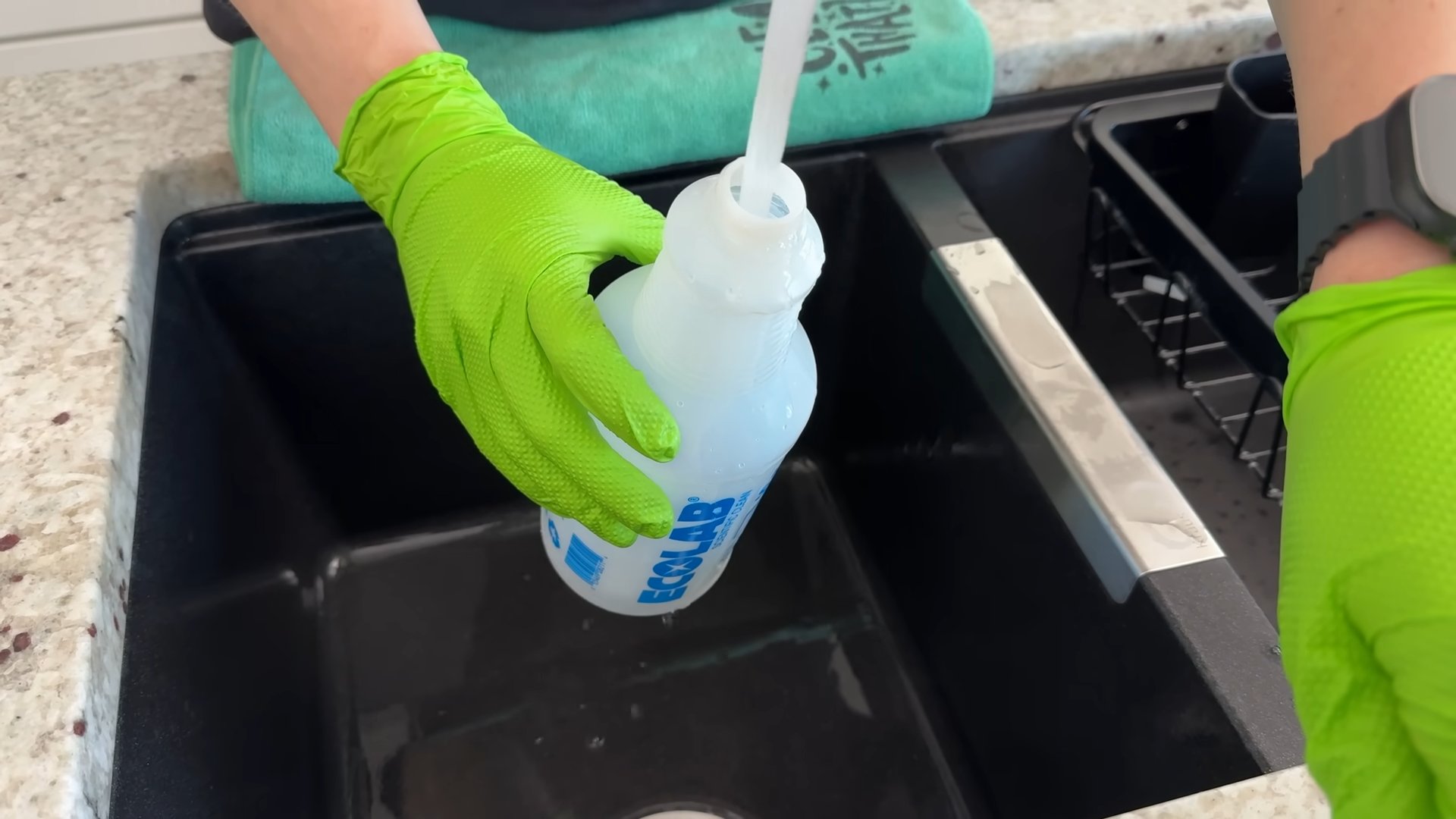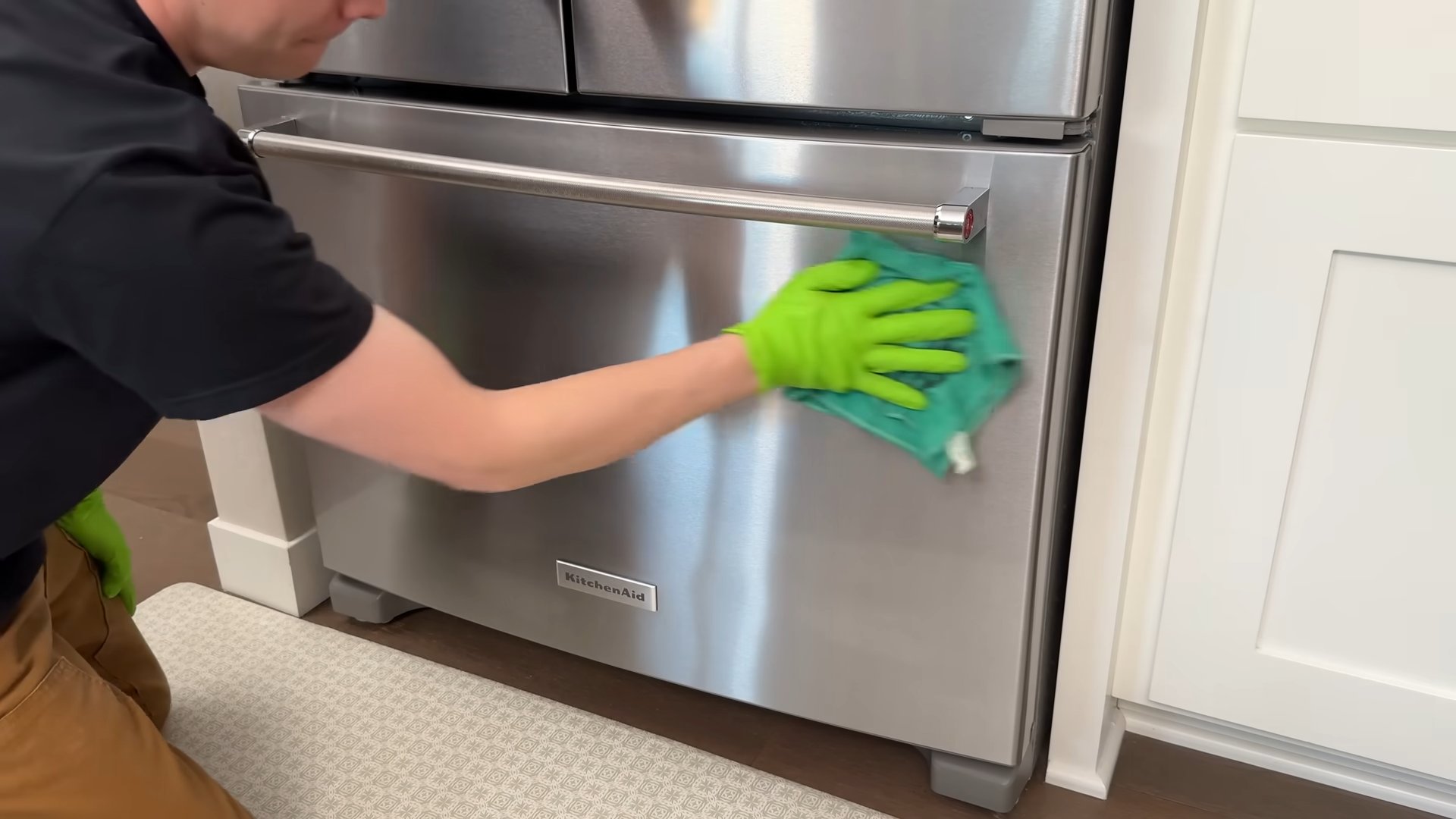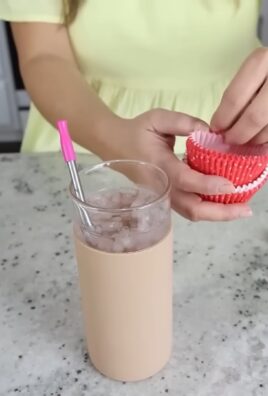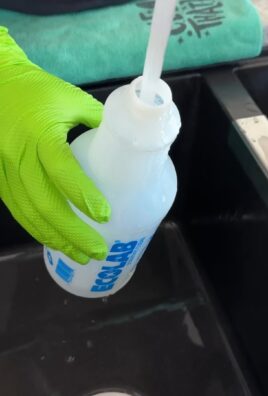Clean Stainless Steel: Sparkling Surfaces, Effortless DIY
I love the sleek, modern look of stainless steel appliances and countertops, but let’s be honest, keeping them spotless can feel like a constant battle! Fingerprints, watermarks, and mysterious smudges seem to appear overnight. That’s why I’m so excited to share my favorite Clean Stainless Steel tricks and DIY solutions with you. This isn’t just about aesthetics; a clean surface is also a hygienic one, crucial for food preparation areas.
The use of stainless steel in the home is a relatively modern phenomenon, gaining popularity in the mid-20th century as manufacturing techniques improved and its durability became widely appreciated. But even with its modern origins, the desire for sparkling clean surfaces is timeless! From polished silver in Victorian homes to the gleaming chrome of the 1950s, maintaining a pristine shine has always been a source of pride and a symbol of a well-kept home.
This article isn’t just about scrubbing with harsh chemicals; we’ll explore gentle, effective Clean Stainless Steel methods using common household ingredients. You’ll learn how to banish those stubborn streaks and restore your stainless steel to its original glory, saving you money on expensive cleaning products and reducing your environmental impact. Whether you’re tackling a fingerprint-covered refrigerator or a splattered stovetop, these DIY solutions will make the task easier and more enjoyable. Get ready to rediscover the beauty of your stainless steel surfaces!

Cleaning Stainless Steel: A Sparkling DIY Guide
Stainless steel is a fantastic material – durable, sleek, and relatively easy to maintain. But those fingerprints, water spots, and stubborn food stains can be a real eyesore! This guide will walk you through my favorite methods for achieving a brilliant shine on your stainless steel appliances and surfaces. I’ve tried countless techniques, and these are the ones that consistently deliver amazing results.
Gathering Your Supplies
- Microfiber cloths (at least two – one for cleaning, one for polishing)
- Soft sponges or cleaning pads (avoid abrasive ones!)
- Warm water
- Mild dish soap (avoid harsh chemicals)
- White vinegar (distilled is best)
- Baking soda
- Optional: Olive oil or baby oil (for polishing)
- Optional: Commercial stainless steel cleaner (use sparingly and follow instructions)
Step-by-Step Cleaning Process
- Preparation is Key: Before you begin, clear the area around your stainless steel surface. Remove any clutter or obstacles that might get in your way. This will make the cleaning process much smoother and more efficient.
- Pre-Clean: Wipe down the surface with a damp microfiber cloth to remove loose dirt, dust, and crumbs. This prevents scratching during the main cleaning phase. I find this initial wipe-down makes a huge difference in the overall cleanliness.
- The Dish Soap Solution: In a bowl, mix a small amount of mild dish soap with warm water. Don’t overdo the soap; a little goes a long way. Too much soap can leave a residue.
- Gentle Scrubbing: Using a soft sponge or cleaning pad, gently apply the soapy water to the stainless steel surface. Work in the direction of the grain. You can usually see the grain by looking closely at the surface; it’s often a subtle line running in one direction. Cleaning with the grain prevents swirl marks.
- Rinse Thoroughly: Once you’ve cleaned the entire surface, rinse it thoroughly with warm water. Make sure to remove all traces of soap. I usually use a clean, damp microfiber cloth to wipe away any remaining soapy residue.
- The Vinegar Power: For tougher stains or water spots, create a solution of equal parts white vinegar and water. Apply this solution to a clean microfiber cloth and gently wipe the affected areas. Vinegar is a natural cleaner and is surprisingly effective at removing stubborn marks. Let it sit for a minute or two before wiping clean.
- Baking Soda Paste (for stubborn stains): For really persistent stains, make a paste of baking soda and water. Apply a small amount of the paste to the stain, gently scrub with a soft sponge, and then rinse thoroughly. Baking soda is a mild abrasive, so use it sparingly to avoid scratching the surface. I only use this method as a last resort.
- Drying and Polishing: After rinsing, immediately dry the stainless steel surface with a clean, dry microfiber cloth. This prevents water spots from forming. For an extra-shiny finish, you can apply a tiny amount of olive oil or baby oil to a clean cloth and gently buff the surface in the direction of the grain. This adds a beautiful shine and helps repel fingerprints.
Dealing with Specific Stainless Steel Challenges
Dealing with Fingerprints
Fingerprints are the bane of many stainless steel owners! The best way to deal with them is to prevent them in the first place – use oven mitts when handling hot items and wipe down the surface regularly. However, if fingerprints do appear, a simple wipe-down with a damp microfiber cloth and a little dish soap usually does the trick. For stubborn prints, try the vinegar solution mentioned above.
Removing Water Spots
Water spots are another common problem. The key is to dry the surface immediately after washing. If water spots have already formed, try the vinegar solution or a gentle scrub with baking soda paste. Remember to always rinse thoroughly and dry completely.
Tackling Grease and Food Stains
Grease and food stains require a bit more elbow grease. Start with the soapy water solution and gentle scrubbing. If that doesn’t work, try the vinegar solution or baking soda paste. For really stubborn stains, you might need to let the cleaning solution sit for a few minutes before scrubbing. Always test any cleaning solution on a small, inconspicuous area first to ensure it doesn’t damage the finish.
Addressing Scratches
Unfortunately, scratches are more difficult to remove. While you can’t completely erase deep scratches, you can sometimes minimize their appearance by carefully polishing the surface with a very fine-grit polishing compound designed for stainless steel. Always follow the manufacturer’s instructions carefully. Prevention is key here – avoid using abrasive cleaners or scouring pads.
Maintaining Your Sparkling Stainless Steel
Regular cleaning is the best way to keep your stainless steel looking its best. A quick wipe-down with a damp microfiber cloth after each use will prevent dirt and grime from building up. This simple habit will save you a lot of work in the long run. I recommend doing a more thorough cleaning at least once a week, or more often if needed.
Choosing the Right Cleaning Products
When choosing cleaning products for your stainless steel, always opt for mild, non-abrasive options. Harsh chemicals can damage the finish and leave streaks. Avoid using bleach or ammonia-based cleaners. If you choose to use a commercial stainless steel cleaner, make sure it’s specifically designed for stainless steel and follow the manufacturer’s instructions carefully.
By following these steps and tips, you’ll be well on your way to enjoying sparkling clean stainless steel surfaces for years to come!

Conclusion
This DIY Clean Stainless Steel method is a game-changer for anyone who wants sparkling, streak-free appliances and surfaces without resorting to harsh chemicals or expensive cleaning products. It’s a must-try because it’s effective, affordable, and environmentally friendly. The simple combination of readily available ingredients cuts through grease, grime, and fingerprints with ease, leaving your stainless steel gleaming. You’ll be amazed at how easily you can achieve professional-looking results in just minutes, saving you time and money in the long run. The satisfaction of knowing you’ve achieved a spotless finish using natural ingredients is truly rewarding. Beyond the immediate shine, this method helps protect your stainless steel’s finish, preventing scratches and dulling that can occur with abrasive cleaners. This gentle yet powerful approach ensures your appliances and surfaces remain beautiful for years to come.
Beyond the basic recipe, there are several ways to customize this Clean Stainless Steel method to suit your specific needs and preferences. For particularly stubborn stains or grease buildup, you can let the paste sit for a few minutes before wiping, allowing the ingredients to work their magic. If you prefer a stronger scent, add a few drops of your favorite essential oil, such as lemon or tea tree oil, to the paste. These oils not only add a pleasant aroma but also possess natural cleaning properties. For larger surfaces like kitchen appliances, consider using a microfiber cloth for optimal cleaning and streak-free results. A soft sponge can also be used, but ensure it’s clean and well-rinsed to avoid leaving behind any residue. Experiment with different ratios of baking soda and white vinegar to find the consistency that works best for you. Some prefer a thicker paste, while others prefer a thinner consistency for easier application. Remember, the key is to gently rub the paste in the direction of the stainless steel grain to avoid scratching.
Ultimately, the best way to truly appreciate the effectiveness of this Clean Stainless Steel technique is to try it yourself. We encourage you to give it a go and experience the transformative power of this simple yet effective DIY solution. Share your results with us! We’d love to see your sparkling clean stainless steel surfaces and hear about your experience. Post your before-and-after photos on social media using the hashtag #CleanStainlessSteelDIY and tag us. Let’s create a community of clean stainless steel enthusiasts who are committed to natural and effective cleaning methods. Don’t hesitate to experiment and find the perfect Clean Stainless Steel routine that works best for you and your home. The results will speak for themselves – a sparkling clean home, achieved naturally and effortlessly.
Frequently Asked Questions
What if I don’t have white vinegar?
While white vinegar is the preferred ingredient due to its acidity and cleaning power, you can substitute it with lemon juice. Lemon juice is a natural alternative with similar cleaning properties, although it might not be as effective for extremely stubborn stains. Simply replace the white vinegar with an equal amount of fresh lemon juice in the recipe.
Can I use this method on all types of stainless steel?
Generally, yes. This method is safe for most types of stainless steel, including kitchen appliances, sinks, and cookware. However, always test a small, inconspicuous area first to ensure it doesn’t damage or discolor the surface. Avoid using this method on antique or highly polished stainless steel without first consulting the manufacturer’s cleaning instructions.
Will this method leave streaks?
Streak-free results are highly achievable with this method. The key is to rinse thoroughly and dry the surface immediately with a clean, soft microfiber cloth, wiping in the direction of the grain. Using a microfiber cloth helps to prevent streaks and leaves a brilliant shine.
How often should I use this Clean Stainless Steel method?
The frequency depends on how often you use your stainless steel appliances and surfaces. For everyday use, a weekly cleaning should suffice. For areas that get more frequent use or are prone to spills and splatters, you may need to clean them more often. Regular cleaning with this method will help prevent buildup and keep your stainless steel looking its best.
Is this method safe for my dishwasher?
No, this method is not intended for use inside a dishwasher. The baking soda and vinegar paste should be applied directly to the stainless steel surface and then rinsed and dried. Never put baking soda or vinegar directly into your dishwasher.
What if I have a really stubborn stain?
For particularly stubborn stains, you can try increasing the dwell time of the paste. Apply the paste to the stain, let it sit for 10-15 minutes (or even longer if necessary), and then gently scrub with a soft cloth or sponge. You may need to repeat the process for extremely stubborn stains. For burnt-on food residue, consider soaking the area with warm, soapy water before applying the paste.
Are there any safety precautions I should take?
Always wear gloves when handling cleaning solutions, even natural ones. Ensure proper ventilation while cleaning, especially when using vinegar, as the fumes can be strong. Avoid getting the mixture in your eyes. If contact occurs, rinse immediately with plenty of water. Keep the mixture out of reach of children and pets. Always test a small, inconspicuous area first before applying to the entire surface.




Leave a Comment